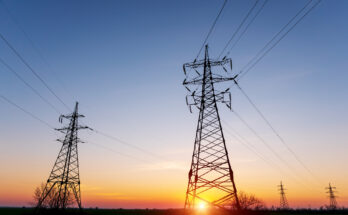The business announces 37 new renewable energy projects with a combined capacity of 3.5 GW.
A collection of 37 new renewable energy projects was announced today by Amazon, which will help the company reach its 2025 goal of using renewable energy to power all operations. As a result, the corporation is already ahead of schedule in its goal to generate all of its energy from renewable sources by 2030.
As a result of Amazon CEO Andy Jassy’s dedication to preserving the planet and decreasing the company’s environmental effect, the company will be the largest corporate user of renewable energy in 2020 and 2021.
As a result of the new projects, Amazon’s renewable energy portfolio has grown from 12.2 gigatonnes to 15.7 gigatonnes, representing a 30% increase. This will be accomplished by the year 2025 when we expect to have 310 wind and solar projects up and running in 19 countries across the world, Jassy said.
The 37 new projects are spread throughout the US, Spain, France, Australia, Canada, India, Japan, and the UAE. The number includes eight rooftop solar systems on Amazon properties. The total footprint of 310 renewable energy projects, according to Amazon, includes 134 wind and solar farms, as well as 176 rooftop solar installations.
Amazon’s US Portfolio Accounts for 66% of Total Capacity
Amazon has completed the construction of a 500-megawatt solar farm in Texas, making it the company’s biggest renewable energy investment to date in terms of capacity. Projects in Arizona, Arkansas, California, Delaware, Georgia, Illinois, Indiana, Mississippi, Missouri, Ohio, Oklahoma, and Virginia are among the most recent initiatives undertaken by the corporation in other parts of the United States. Amazon’s overall renewable energy acquisition in the United States has increased to 10.4 gigawatts, an increase from 7.2 gigawatts before.
Five new projects in Spain will add 314 megawatts of energy capacity, raising the company’s portfolio in that nation to 1.4 gigatonnes. According to the business, a second solar project in France will expand capacity to 38 megawatts, while seven rooftop solar projects in Australia, Canada, India, and Japan will contribute more than 5 megawatts of power.
According to Amazon, once operational, these projects will generate 42,000 gigatonnes of renewable energy each year. That’s enough energy to power 3.9 million households in the United States per year.
Furthermore, the firm says that the carbon-free energy supplied by its renewable energy projects would help offset or prevent 17.3 million metric tons of carbon emissions per year.
Finally, Amazon said that it would continue to invest in renewable energy combined with energy storage, doubling its total energy storage capacity from 220 to 445 megawatts. This comprises a 300-megawatt solar project in Arizona with 150 megawatts of battery storage and a 150-megawatt solar project in California with 75 megawatts of battery storage.
As great as all of this is, and as amazing as it is to see a large company such as Amazon investing in renewable energy to reduce its environmental impact, they have only invested in energies such as solar and wind energy, which have many shortcomings.
Now you might say, if not solar or wind, then what is the alternative? To that, we say look no further since the Neutrino Energy Group has the answer.
NEUTRINOS: THE FUTURE’S ENDLESS ENERGY SUPPLY
The Neutrino Energy Group has gone above and beyond the impossible in order to accomplish what was previously considered to be impossible: harnessing the minuscule beams of cosmic particles that bombard nearly everything in the universe for the purpose of generating energy. Neutrinos were previously thought to be massless until it was proven otherwise by two separate scientists, Takaaki Kajita of Japan and Arthur McDonald of Canada in 2015. In essence, utilizing neutrinos and other non-visible radiation as a source of energy is akin to using a photovoltaic (PV) solar cell. Rather than catching neutrinos and other non-visible radiation, a portion of their kinetic energy is collected and converted into electricity.
Neutrino Energy Group’s Neutrinovoltaic Technology does not have the same shortcomings as other renewable energies in terms of efficiency and reliability. Neutrinos, for example, may flow through almost any known material, meaning that neutrinovoltaic cells don’t need sunlight to work. They may be utilized inside, outdoors, and even underwater. Snow and other bad weather have no effect on neutrinovoltaic because of the ease with which they may be insulated while producing power. Because neutrinovoltaic cells do not need visible light to function, they may continue to generate energy even when the number of daylight hours is drastically reduced. Neutrinovoltaic can generate electricity 24 hours a day, 365 days a year, no matter where on the planet.
A historic transformation in the area of cutting-edge renewable energy is occurring at the Neutrino Energy Group institution in Berlin, Germany, led by the famous director and CEO Holger Thorsten Schubart. There is little question that, thanks to neutrinovoltaic technology, the world will soon be able to experience a new kind of permanent and ecologically friendly energy generation. Neutrinos are completely safe for the environment while also being an unlimited and inexhaustible resource, with everything that entails. An energy source that represents peace and freedom.





